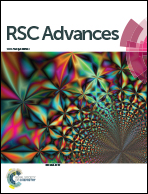Studies directed towards nonyl acridine orange analogues having the potential to act as FRET donors with the PDT drug Pc 4†
Abstract
A group of nonyl acridine orange analogues (NAO) was prepared which were designed to have the potential of possessing visible bands allowing them to act in cells as fluorescence resonance energy transfer (FRET) donors with the photodynamic therapy drug Pc 4. The existence of Pc 4-FRET with the analogues of NAO in MCF-7c3 cells was probed. The results suggest that NAO analogues giving strong FRET with Pc 4 in cells can be found.


 Please wait while we load your content...
Please wait while we load your content...